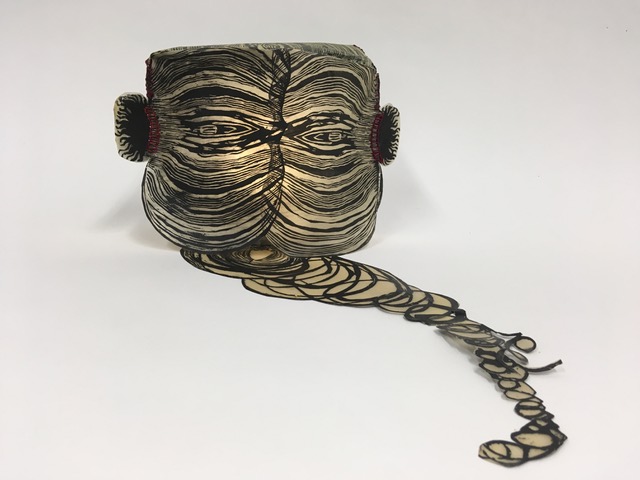Travelling Workshops: Print, Wax, Poke and Stitch
Beeswax, the largest surface area Black and Decker pancake griddle that I could find at TARGET, prints on Japanese paper, a tweezer, a junky paint brush. That was it. That was the set, which led me to begin waxing my woodblock prints to create new opportunities with light and translucency, and stronger paper surfaces to sew into sculptural forms.
In 2003 I saw some extraordinary woodcut and etched prints Nebraskan artist by Karen Kunc and was mesmerized by how opaque paper was transformed into a translucent sheet where an etching and a woodcut printed on 2 sides of the paper were merged into one.
I experimented with my own work and have had bouts of printing and waxing over the past 15 years. Associated Miscellany, an artist book now in the collection of the Massachusetts College of Art and Design’s library was an exploration of bees, honey and wax, which drew upon evocative and poetic ideas of the origin of these insects and their substances. For example, Pliny the Elder, lost in the eruption of Mt. Vesuvius in AD 79 thought that honey came out of the air, that bees feasted on star shine, and speculated about honey being the perspiration of the sky or saliva of the stars. For many years, this book, sewed with waxed linen had the aroma of honey.
The workshop of Print, Wax, Poke and Stitch evolved out of demonstrating to students how easy waxing prints could be, along with encouraging new possibilities for transforming their artwork. In May 2018 I taught the workshop in a weekend format at Zea Mays Studio in Florence, MA. Being that Zea Mays is a print complex devoted to non-toxic printmaking I quickly learned the correct temperature to safely melt beeswax.
Participants were invited to bring prints already made on Japanese paper, but I also brought a number of my carved wooden blocks, which people could use to make graphite rubbings with, which could also be waxed. People also learned simple book binding techniques, so sewing and poking became an exercise in book creation.
More recently, an exhibition call for Prints as Sculpture led me to make some new pieces with printed, waxed and sewn structures. The recent advances in LED technology have made the illumination of these forms safe and open endless possibilities.








